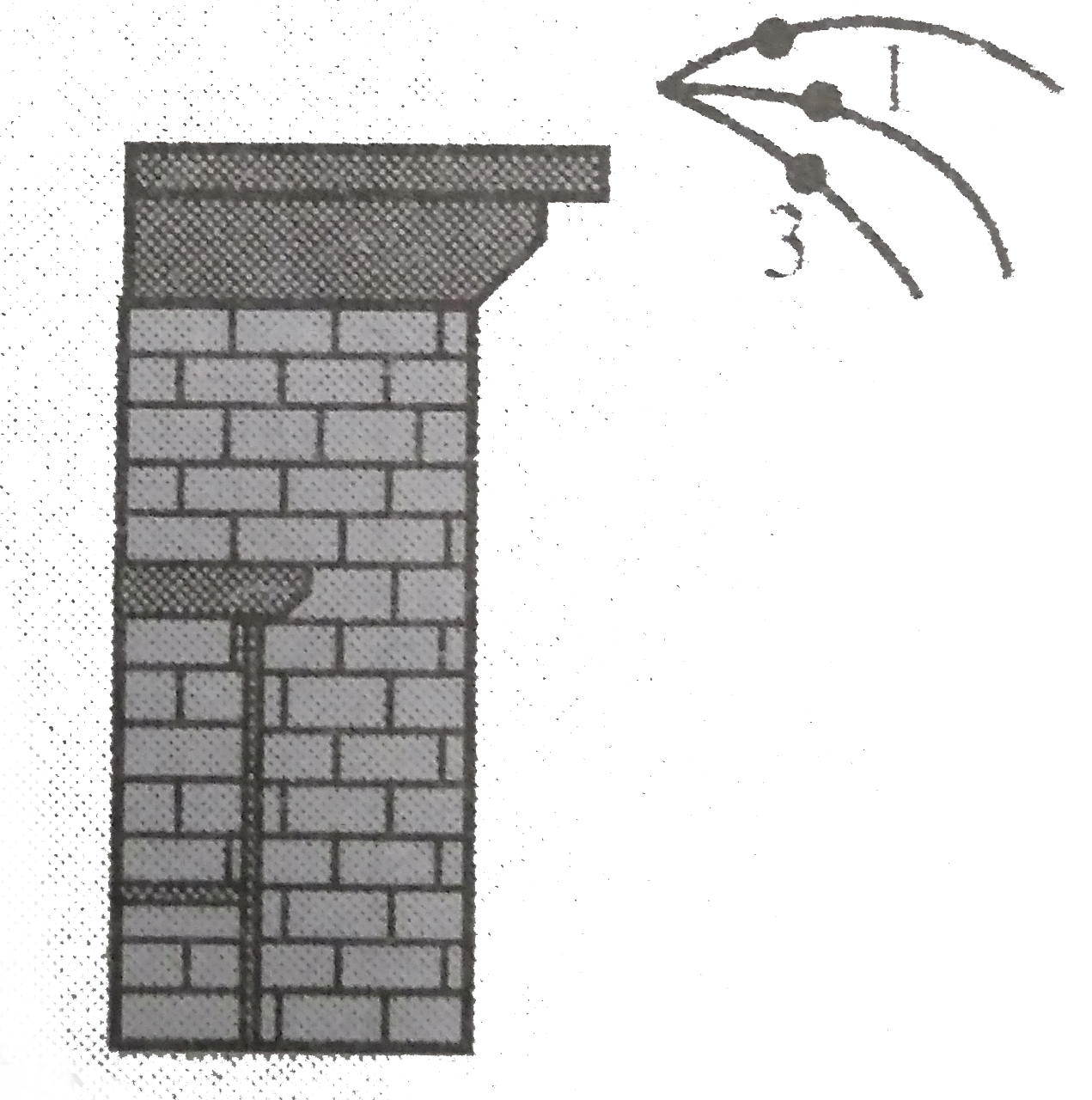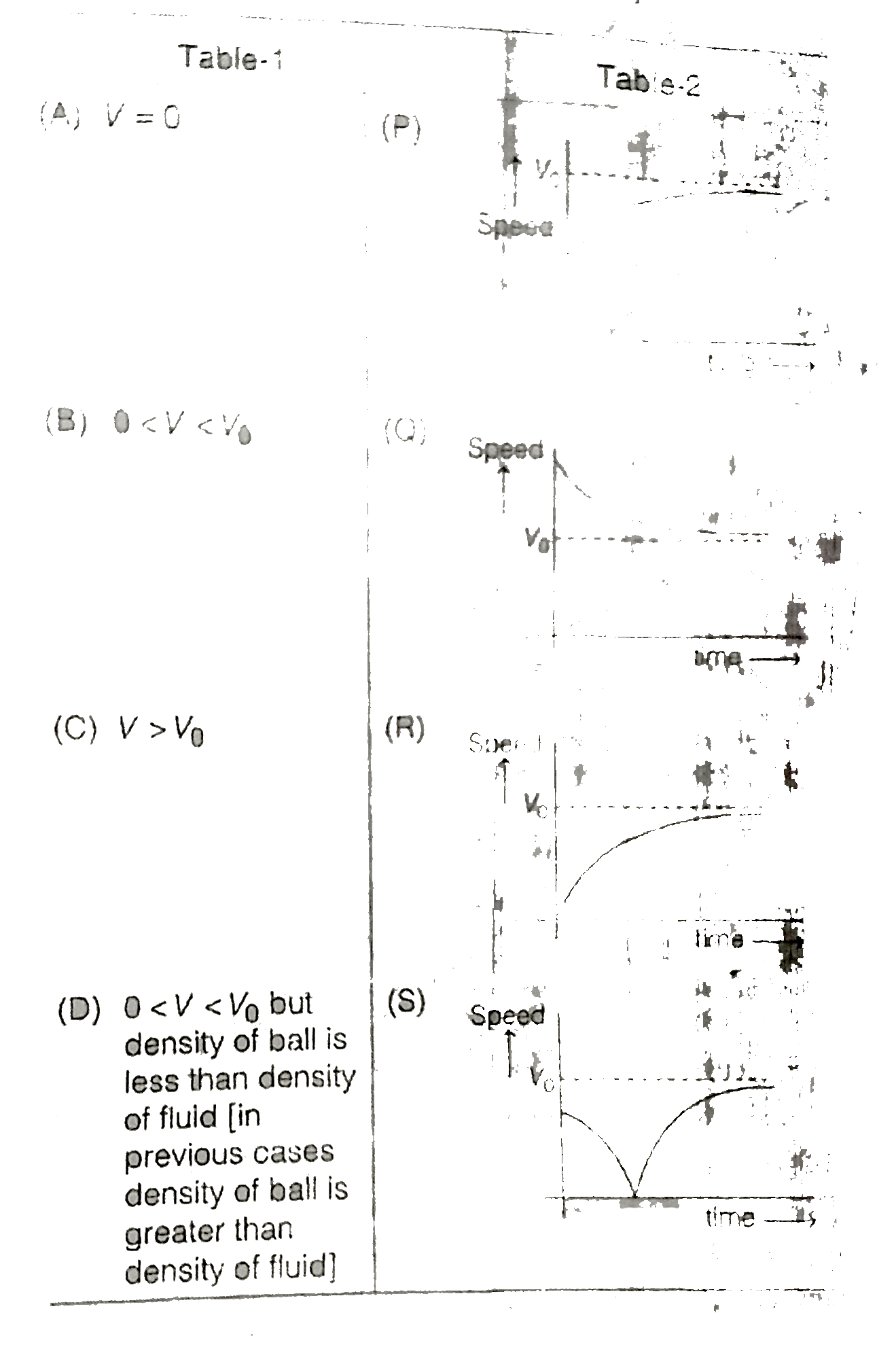From a building two balls A and B are thrown such that A is thrown upwards and B downwards ( both vertically with the same speed ). If vAandvB are their respective velocities on reaching the ground , then
vB>vA
vA=vB
vA>vB
their velocities depend on their masses.
The correct Answer is:B
To solve the problem of two balls, A and B, being thrown from a building with the same initial speed but in opposite directions, we need to analyze their motions and determine their velocities when they reach the ground.
1. Understanding the Initial Conditions:
- Ball A is thrown upwards with an initial velocity u.
- Ball B is thrown downwards with the same initial velocity u.
- Both balls are thrown from the same height H.
Hint: Identify the initial velocities and directions of both balls.
2. Analyzing Ball A's Motion:
- When Ball A is thrown upwards, it will first ascend until it reaches its highest point, where its velocity will be 0.
- After reaching the highest point, it will start descending back towards the ground.
- The total distance it travels upwards is H+h, where h is the height it rises above the initial point before descending.
- The final velocity vA when it reaches the ground can be calculated using the equation of motion:
v2A=u2+2gh
- Since it will fall back down through the height H, we can consider the total height H+h for the downward motion.
3. Analyzing Ball B's Motion:
- Ball B is thrown directly downwards with the same initial velocity u.
- The distance it travels to reach the ground is H.
- The final velocity vB when it reaches the ground can be calculated using the same equation of motion:
v2B=u2+2gH
4. Comparing the Final Velocities:
- For Ball A, after reaching the highest point and then falling back down, the total distance it falls is H+h.
- For Ball B, the total distance it falls is H.
- However, due to the symmetry of the motion, both balls will have the same final speed when they reach the ground.
- Thus, we can conclude that:
vA=vB
5. Conclusion:
- The final velocities of both balls when they reach the ground are equal, i.e., vA=vB.
Final Answer:
Both balls will have the same velocity upon reaching the ground: vA=vB.
- Ball A is thrown upwards with an initial velocity u.
- Ball B is thrown downwards with the same initial velocity u.
- Both balls are thrown from the same height H.
- When Ball A is thrown upwards, it will first ascend until it reaches its highest point, where its velocity will be 0.
- After reaching the highest point, it will start descending back towards the ground.
- The total distance it travels upwards is H+h, where h is the height it rises above the initial point before descending.
- The final velocity vA when it reaches the ground can be calculated using the equation of motion:
v2A=u2+2gh
- Since it will fall back down through the height H, we can consider the total height H+h for the downward motion.
- Ball B is thrown directly downwards with the same initial velocity u.
- The distance it travels to reach the ground is H.
- The final velocity vB when it reaches the ground can be calculated using the same equation of motion:
v2B=u2+2gH
- For Ball A, after reaching the highest point and then falling back down, the total distance it falls is H+h.
- For Ball B, the total distance it falls is H.
- However, due to the symmetry of the motion, both balls will have the same final speed when they reach the ground.
- Thus, we can conclude that:
vA=vB
- The final velocities of both balls when they reach the ground are equal, i.e., vA=vB.
Both balls will have the same velocity upon reaching the ground: vA=vB.
Topper's Solved these Questions
Similar Questions
From the top of a tower a body A is thrown up vertically with velocity u and another body B is thrown vertically down with the same velocity u. If vA and VB are their velocities when they reach the ground and tAandtB are their times of flight, then
View SolutionA person standing near the edge of the top of a building throws two balls A and B. The ball A is thrown vertically upward and B is thrown vertically downward with the same speed. The ball A hits the ground with speed vA and the ball B hits the ground wiht a speed vB. We have
View Solution
Knowledge Check
From the top of a tower, a stone A is thrown upwards and a stone B is thrown downwards with the same speed. The velocity of stone A, on colliding with the ground is :
AGreater than the velocity of BBLess than the velocity of BCThe velocities of stones A and B will be sameDBoth the stones will fall on the earth at the same timeTwo balls X and Y are thrown from top of tower one vertically upward and other vertically downward with same speed. If times taken by them to reach the ground are 6 s and 2 s respectively, then the height of the tower and initial speed of each ball are (g=10m/s2)
A60 m, 15 m/sB80 m, 20 m/sC60 m, 20 m/sD45 m, 10 m/sA stone dropped from a building of height h and it reaches after t second on the earth. From the same building if two stones are thrown (one upwards and other downwards) with the same speed and they reach the earth surface after t1 and t2 seconds, respectively, then
At=t1−t2Bt=t1+t22Ct=√t1t2Dt=t21t22
A stone is thrown vertically upwards with a velocity of 4.9ms−1. Calculate : the time taken to reach the ground.
View SolutionThree identical balls are thrown from the top of a building, all with the same initial speed. As shown in figure., the first ball is thrown horizontally, second above horizontal level, and third at an angle below the horizontal. Neglecting air resistance, rank the speeds of the balls at the instant each hits the ground.

View SolutionA ball is thrown downward In a viscous fluid with speed V. Terminal speed of ball is V0

View SolutionTwo balls AandB of same masses are thrown from the top of the building A. Thrown upward with velocity VandB, thrown downward with velocity V, then
View SolutionTwo stones are thrown from top of tower, one vertically upward and other downward with same speed. Ratio of velocity when they hit the ground is:
View Solution
